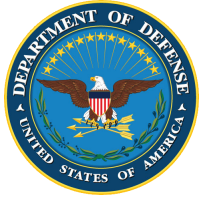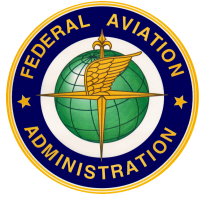Life Cycle Cost Analysis
By Mike Speidel
![]()
There's a trend forming in our niche of the aviation industry: comparing two or more airfield marking products through life cycle cost analysis (LCCA).
You already do this in your everyday personal life when you choose goods from "Great Value", "Kirkland", or "Up&Up" over brands with a marketing budget based on cost alone. Admittedly, we don't make those decisions based on sophisticated analysis, it's based more on feeling or perception, but we commonly make decisions upon perceived value.
In the latest changes to guidance literature, two separate federal agencies have decided to analyze airfield marking materials to objectively measure value using life cycle cost analysis.

Department of Defense
Guidance affected:
Air Force ETL 97-18 Guide Specification for Airfield and Roadway Marking
UFGS 32 17 23.00 20 Pavement Markings, UFGS 32 17 24.00 10 Pavement Markings
According to the Library of Congress website, House Report 114-270 - National Defense Authorization Act (NDAA) for Fiscal Year 2016, under Section 2851 added language under the title "Modification of Department of Defense guidance on use of airfield pavement markings". The language states:
The Secretary of Defense shall require such modifications of Unified Facilities Guide Specifications for pavement markings (UFGS 32 17 23.00 20 Pavement Markings, UFGS 32 17 24.00 10 Pavement Markings), Air Force Engineering Technical Letter ETL 97-18 (Guide Specification for Airfield and Roadway Marking), and any other Department of Defense guidance on airfield pavement markings as may be necessary to permit the use of Type III category of retro-reflective beads to reflectorize airfield markings. The Secretary shall develop appropriate policy to ensure that the determination of the category of retro-reflective beads used on an airfield is determined on an installation-by-installation basis, taking into consideration local conditions and the life-cycle maintenance costs of the pavement markings.

Federal Aviation Administration
Guidance affected:
FAA 150/5370-10G (P-620) Standards for Specifying Construction of Airports
The guidance in the current FAA Advisory Circular for new construction projects states:
Thermoplastic airport markings will be subject to an Engineering life-cycle cost analysis prior to inclusion in specifications.
The two recent modifications may be different but both have the same message: "You must justify the specification of materials with higher initial costs." Perhaps it's because the perceived difference is negligible, like when you debate between value and name brands, but both the FAA and DoD want to make sure their funding is being maximized.
As a taxpayer, I think it's refreshing. As an airfield marking consultant, I like it even more because this type of thing falls in our wheelhouse.
In order to justify higher quality materials (read: higher initial costs) using an LCCA on an airport/installation-specific basis, you're going to need at least two things to produce an accurate conclusion:
- Objective Analysis: It's going to be harder to be objective if the analysis is completed in-house. As far as I know there are no LCCA templates
that have been provided by the FAA*/DoD; therefore, methods and conclusions will vary significantly, ultimately leaving your analysis up to interpretation.
*As a footnote, Sightline has submitted a problem statement to the Airport Cooperative Research Program (ACRP) proposing the development of a standard LCCA for preformed thermoplastic as part of a revision of the Airfield Marking Handbook. We'll keep you posted on the results. - Good Data: Assuming you have a proper tool in place to objectively measure value, you will need good data to accurately anticipate expected life. Otherwise, it's garbage in, garbage out.
Sightline already offers life cycle cost analysis as part of our Airfield Marking Audit process, but we are willing to perform stand-alone LCCA's for those in need of justifying Type III over Type I glass beads or preformed thermoplastic over paint. Click my picture at the top of the page to send me an email and I'll reply with more information.
Jump to another article:
Spring 2016 Newsletter | FAA AC 150/5370-10G | Life Cycle Cost Analysis | Scars & Stripes | What's New?
